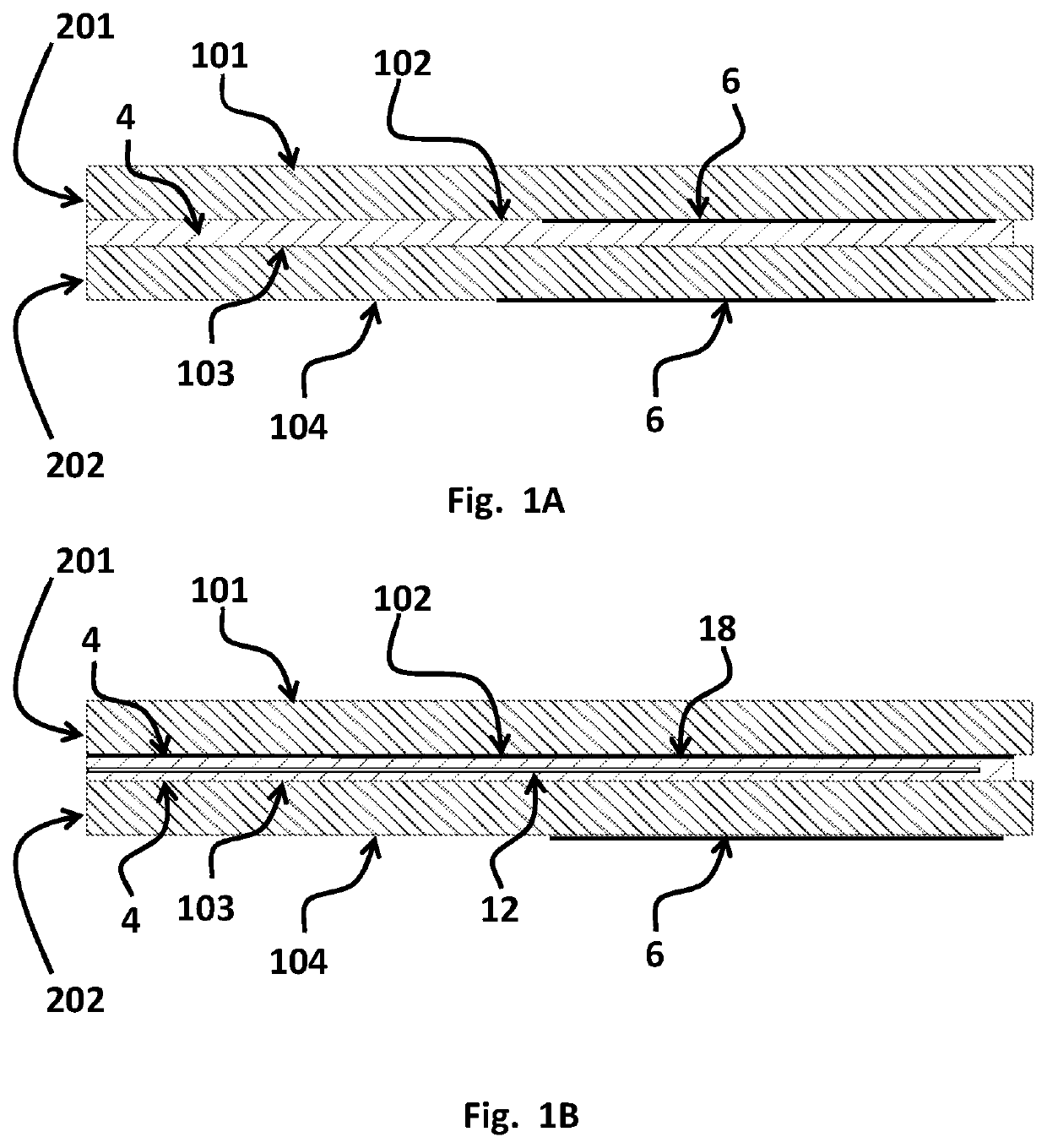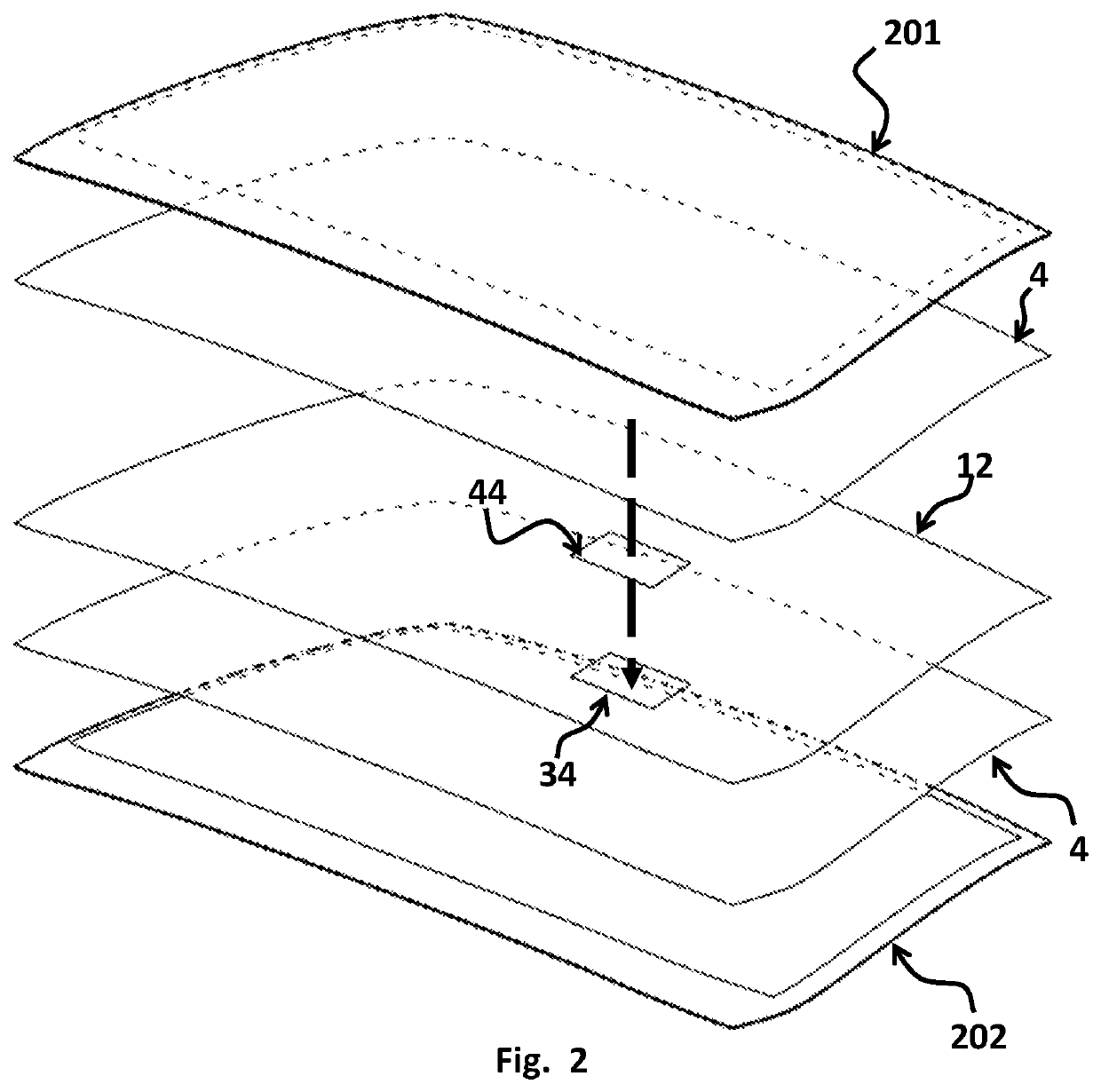Invisible edge solid substrate compensation layer for automotive glazing
a technology of automotive glazing and solid substrate, applied in the direction of vehicle maintenance, vehicle cleaning, transportation and packaging, etc., can solve the problems of objectionable aesthetics and distortion, large display sizes are limited to use on flat laminates, and display sizes for use in bent glass laminates in particular, so as to improve the aesthetics of edges.
- Summary
- Abstract
- Description
- Claims
- Application Information
AI Technical Summary
Benefits of technology
Problems solved by technology
Method used
Image
Examples
Embodiment Construction
[0030]Laminates, in general, are articles comprised of multiple sheets of thin, relative to their length and width, material, with each thin sheet having two oppositely disposed major faces, typically with each having relatively uniform thickness, which are permanently bonded to one and other across at least one major face of each sheet.
[0031]A typical automotive laminate cross section is illustrated in FIGS. 1A and 1B. In the embodiment illustrated, the laminate is comprised of two layers of glass the exterior or outer 201 and interior or inner 202 that are permanently bonded together by a plastic interlayer 4. The glass surface that is on the exterior of the vehicle is referred to as surface one 101 or the number one surface. The opposite face of the outer glass layer 201 is surface two 102 or the number two surface. The glass surface that is on the interior of the vehicle is referred to as surface four 104 or the number four surface. The opposite face of the inner glass layer 202...
PUM
| Property | Measurement | Unit |
|---|---|---|
| glass transition temperature | aaaaa | aaaaa |
| thickness | aaaaa | aaaaa |
| thicknesses | aaaaa | aaaaa |
Abstract
Description
Claims
Application Information
 Login to View More
Login to View More - R&D
- Intellectual Property
- Life Sciences
- Materials
- Tech Scout
- Unparalleled Data Quality
- Higher Quality Content
- 60% Fewer Hallucinations
Browse by: Latest US Patents, China's latest patents, Technical Efficacy Thesaurus, Application Domain, Technology Topic, Popular Technical Reports.
© 2025 PatSnap. All rights reserved.Legal|Privacy policy|Modern Slavery Act Transparency Statement|Sitemap|About US| Contact US: help@patsnap.com


